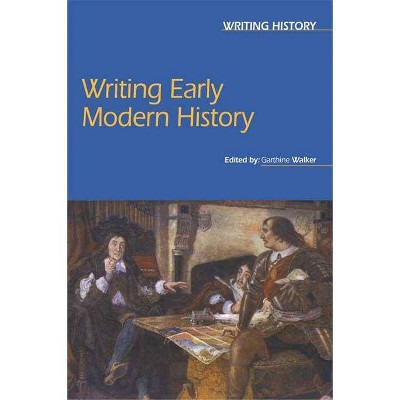Writing History at the Ottoman Court - by H Erdem Cipa & Emine Fetvaci (Paperback)

Similar Products
Products of same category from the store
AllProduct info
<p/><br></br><p><b> About the Book </b></p></br></br>It answers such questions as how the Ottomans understood themselves within their court and in relation to non-Ottoman others; how they visualized the ideal ruler; how they defined their culture and place in the world; and what the significance of Islam was in their self-definition.<p/><br></br><p><b> Book Synopsis </b></p></br></br><p>Ottoman historical writing of the 15th and 16th centuries played a significant role in fashioning Ottoman identity and institutionalizing the dynastic state structure during this period of rapid imperial expansion. This volume shows how the writing of history achieved these effects by examining the implicit messages conveyed by the texts and illustrations of key manuscripts. It answers such questions as how the Ottomans understood themselves within their court and in relation to non-Ottoman others; how they visualized the ideal ruler; how they defined their culture and place in the world; and what the significance of Islam was in their self-definition. </p><p/><br></br><p><b> Review Quotes </b></p></br></br><br><p>[These essays] make a significant contribution to a relatively new strand of Ottoman research that takes as its subject Ottoman reading communities, literacy practices, and the roles that particular texts played in Ottoman society.</p>-- "SHARPNews"<br><br><p>[T]he rich and nuanced exposition of the wide range of texts and images explored . . . that constitutes [the] valuable contributions to scholarship.June 2014</p>-- "Bulletin of the School of Oriental and African Studies"<br><br><p>[T]his edited book is highly recommended to scholars who are interested in early modern and modern Ottoman history writing.</p>-- "The Muslim World"<br><br><p>[T]his volume's great strength is its many original contributions to the study of the long sixteenth century. Those looking for the freshest new work on the classical age, along with a wonderful essay on nineteenth-century Ottoman historiography, will find this book a rich read.</p>-- "Journal of Arabic Literature"<br><br><p>Collectively, the essays in the volume merit recognition in their effort to recover the lesser-heard voices of Ottoman historiography while engaging with the question of how history writing was used in constructing, questioning, and negotiating what constituted 'Ottomanness' at certain critical historical moments. In so doing, the volume contributes to a wider understanding of the contexts of textual and visual production, reading, and using history that extend beyond the confines of the Ottoman Empire.</p>-- "Journal of World History"<br><br><p>Each article has the potential to spark lively academic discussion and offer alternative vistas in Ottoman historiography . . . Such ground-breaking edited volumes will set the intellectual agenda for future studies as long as they adopt a rigorous methodological approach, as this volume clearly does.</p>-- "Journal of Ottoman Studies"<br><br><p>The cliché 'a gem of a book' holds true for this volume, as it is the crystallized form of seven Ottoman specialists' groundbreaking, extensive research.</p>-- "international Journal of Turkish Studies"<br><p/><br></br><p><b> About the Author </b></p></br></br><p>H. Erdem Çipa is Assistant Professor of Ottoman History in the Departments of History and Near Eastern Studies, University of Michigan, Ann Arbor. </p><p>Emine Fetvacı is Assistant Professor of Islamic Art at Boston University and author of <i>Picturing History at the Ottoman Court</i> (IUP, 2012).<br/></p>
Price History
Price Archive shows prices from various stores, lets you see history and find the cheapest. There is no actual sale on the website. For all support, inquiry and suggestion messagescommunication@pricearchive.us




















